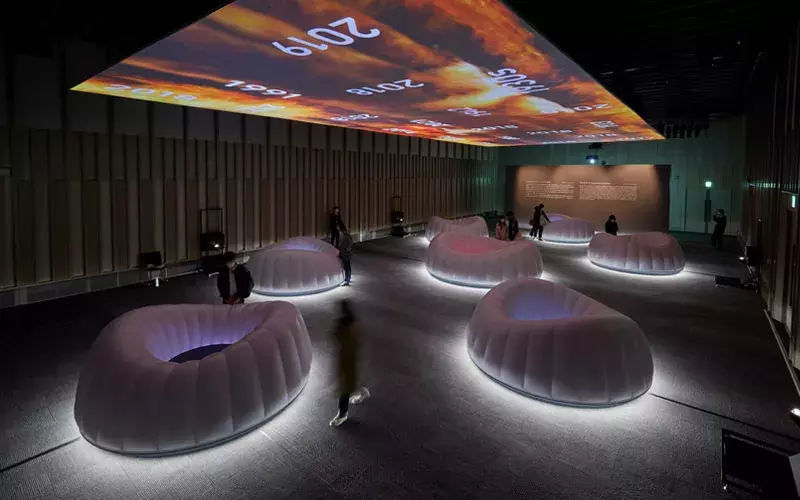
- Date
01.28.2023 (Sat.)
- Time
02:00 PM - 05:00 PM (PST)
Session 1 | 2:00 PM
Break | 3:30 PM
Session 2 | 3:45 PM
- Location
JAPAN HOUSE Salon, Level 5
- Fee
Free
The Terasaki Center’s annual Global Japan Forum brings together renowned experts in various fields to analyze and discuss key issues facing Japan today in a global context. It aims to create an interdisciplinary and transnational platform in which to engage Japan from new and innovative perspectives and to connect the world of academic scholarship to the broader community.
In conjunction with the JAPAN HOUSE Los Angeles exhibition Designing with Disaster: Stories from Seven Regenerative Cities, planned by ArcDR3 (Architecture and Urban Design for Disaster Risk Reduction and Resilience), this year’s forum invited renowned architects, academics, and environmental researchers from both Los Angeles and abroad to discuss the lessons learned from past environmental disasters and how to create disaster-resilient environments to safeguard our futures.
Session 1 | Disasters around the World
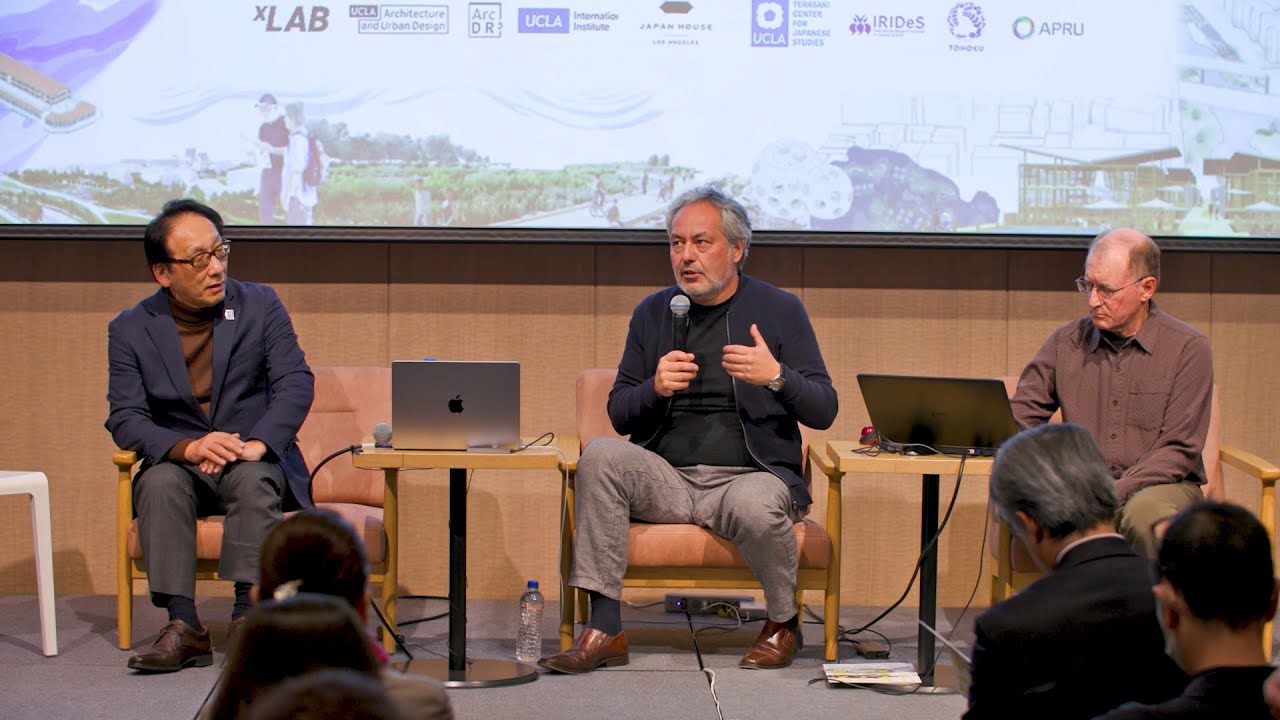
*To watch the video in full screen, please click on the image above, then click on the YouTube icon on the lower right-hand corner.
In this first session, three experts in disaster research centered on discussions about various disasters that affect Japan, the US, and South America, and explored ways society have historically adapted to disaster risks and responded to disaster situations.

Speakers:
Emcee 1: Mohamed Sharif | UCLA
Emcee 2: William Marotti | UCLA
Panelist 1: Fumihiko Imamura | Tohoku University
Panelist 2: Renato D’Alencon | P. Catholic Univ. of Chile
Panelist 3: Jack Cohen | U.S. Forest Service
Click here for speaker profiles (listed left to right)
Mohamed Sharif, Adjunct Professor, UCLA
Mohamed Sharif is Assistant Adjunct Professor in the UCLA Department of Architecture and Urban Design, serving on the faculty since 2011 and was the director of the Summer Programs from 2017 through 2019, and is founder of the firm SharifLynch Architecture. He teaches in both undergraduate and graduate design and comprehensive integrative design studios, and advanced graduate design topic studios with a focus on novel and ancient passive and active cooling construction technologies and their aesthetic and formal effects. As an active critic, Mohamed’s essays and reviews have appeared in journals and periodicals, including 306090, arq, Constructs, JAE, and Log. A recent essay on the work of artist Soo Kim’s work features in a catalog for a 2018 exhibition at the Getty Center. He served on the editorial board of arq (Cambridge University Press) from 2006 to 2016; and on the advisory board of the Los Angeles Forum for Architecture and Urban Design from 2004 to 2009, where he was also President from 2007 to 2009. With over twenty years of experience, Mohamed has completed projects in many sectors with both his practice Sharif, Lynch: Architecture, and previously with award-winning firms, including Koning Eizenberg Architecture and mOrphosis. He holds a Bachelor of Science (Honors) in Architecture and a Master of Science in Advanced Architectural Studies from the Scott Sutherland School of Architecture in Aberdeen, Scotland.; and spent his third year of undergraduate study at the Illinois Institute of Technology as an exchange student. His master’s design thesis earned the James B. Johnston Thesis Prize, and his undergraduate dissertation “On Venturi and Scott Brown” garnered a RIBA Butterworth-Heinemann prize. In 1993, the RIBA retained the dissertation in its permanent collection.
William Marotti, Associate Professor, UCLA
William Marotti teaches modern Japanese history, with an emphasis on everyday life and cultural-historical issues. He is also Chair of the East Asian Studies M.A. Interdepartmental Degree Program. He received his doctorate in 2001 from the University of Chicago’s Department of East Asian Civilizations and Cultures. Prior to joining the UCLA faculty, William participated from 2001 to 2003 in the Project on the Cold War as Global Conflict at New York University’s International Center for Advanced Studies (as a Woodrow Wilson Postdoctoral Fellow), and from 2003 to 2004 in the Expanding East Asian Studies project (ExEAS) of the Weatherhead East Asian Institute at Columbia University. From 2004 to 2006, William taught as a Visiting Assistant Professor in the History department at UC Santa Cruz. William's major research project to date culminated in his book, Money, Trains and Guillotines: Art and Revolution in 1960s Japan (Duke University Press, 2013). The study addresses the politics of culture and everyday life in Japan in the early 1960s, explored through a focus upon transformations in avant-garde artistic production and performance. The book examines the advent of this art-based activism in Japan in the late 1950s and early 1960s in its complex relation with an internationalized art world, mass culture, domestic protest movements, and evolving forms of state practice, law, and surveillance. It reflects upon the significance of this history for understanding the 1960s as a global moment, and the particular role of art and performance in these transformations. William's current project, “The Art of Revolution: Politics and Aesthetic Dissent in Japan’s 1968” (under contract, Duke University Press), follows this work with an expanded consideration of the politics of the 1960s in Japan, and their articulation with the global phenomena of the decade. This study includes an examination of late 1960s Japanese political mobilization, focused upon the politics of violence, the problem of political subjectivation, and the distinct forms of activism arising in this period; this part of the larger study appeared in an earlier form in the February 2009 issue of the American Historical Review for their forum on "The International 1968" (see publications below for copies of this and other materials). Marotti also presented portions of his research on the global and local aspects of 1968 in the American Historical Association convention of 2018 in the first of six linked panels on "Fifty Years After 1968" (available here in the C-SPAN archives). Other portions of this work have been unfolded in a variety of venues, including art catalogs, journals ranging from boundary 2 to theater and dance, and in edited volumes (see Selected Publications below). Having worked through these different, interrelated aspects of the problem of 1968 in Japan, Marotti is drawing this work together and reworking it for the book in progress. William’s broader research interests include post-WWII Japan, global history, the 1960s, Cold War, comparability, critical theory, everyday life, art and politics, performance, law and legitimation, and protest movements. He also serves as director for the Japanese Arts and Globalizations (JAG) multi-campus research group.
Fumihiko Imamura, Professor, Tohoku University
Fumihiko Imamura finished his Ph.D. study at Tohoku University, Japan in 1989. He was promoted to a full-professor of Tohoku University in 2000 and is now director of the International Research Institute of Disaster Science (IRIDeS) at Tohoku University since April 2014, and also is a professor of Tsunami Engineering. He is an expert on tsunami modeling for warning, mitigation planning and education/awareness. He has conducted several field surveys as leader for earthquakes and tsunamis damage investigation since the 1992 Nicaragua and Indonesia tsunamis. And he is a secretary, international TIME-project (Tsunami Inundation Modeling Exchange) supported by IOC and IUGG Tsunami commission. He is a member of the Science Council of Japan, Science member of the Central Disaster Management Council in Japan, and was the president of Japan Society for Natural Disaster Science from 2008-2011. After the 2011 Tohoku earthquake, he was a member of the study group of the reconstruction design council in response to the 2011 Tohoku earthquake at the cabinet office, and the committee for technical investigation on Countermeasures for Earthquakes and Tsunamis of the Central Disaster Management Council.
Renato D’Alencon, Professor, Pontifical Catholic University of Chile
Renato D’Alençon Castrillón is an Architect, graduated from the School of Architecture of the P. Universidad Católica de Chile, and received his M. Arch. from Cornell University. He was awarded a Fulbright Grant from 2002 to 2004 to pursue his Master’s, and a Deutscher Akademischer Austausch Dienst Grant to pursue a Ph.D. degree in the Technische Universität Berlin. He has taught Design Studios and Building Technology at Pontificia Universidad Católica de Chile in the areas of architectural design and building technology. He has been Guest Faculty at the University of Chile, Politecnico di Milano and Technische Universität Berlin. He currently works at Universidad Católica de Chile in research, teaching and as Academic Deputy Director. His field of scholarly work includes environmental design and performance of buildings, area where he published the book “Acondicionamientos” (Ediciones ARQ, Santiago 2008) and several articles; the recovery and development of heritage building systems, an area which has published the book Eingewanderte Baumeister (DOM Publishers, Berlin 2014) and other publications product of his research in catastrophes management and heritage recovery (Reclaiming Heritage); and in the area of Circular Economy in Architecture, in which he leads the research group “RRR: Economía Circular en Arquitectura”. He is an architect of the Pontifical Catholic University of Chile, Master in City Design and Social Sciences of the London School of Economics, and Ph.D. student in Civil Engineering from the University of Granada. He is an expert on integrated planning, carrying capacity models, sustainability, and resilience. He has worked with the UNDP, World Bank, and IADB. He was Technical Secretary of the Cities and Territory Ministers Committee and National Director of Urban Projects at the Chilean Ministry of Housing and Urban Development. He was responsible for the creation of the first Urban Planning academic program in Chile and the founder of the Chilean Planners Network. He is a professor at the School of Architecture and the Institute of Urban and Territorial Studies. He was Principal Investigator of the National Research Center for Integrated Risk Management, Director of Cities Observatory UC, and the Plans and Urban Projects Program UC.
Jack Cohen, Retired U.S. Forest Service Researcher
Jack Cohen is a retired U.S. Forest Service Research fire scientist who has spent years determining how structures ignite during extreme wildfires. Jack served as Research Physical Scientist for the Missoula Fire Sciences Laboratory. He has been involved in wildland fire research since the early 1970s and has served at the U.S. Forest Service fire laboratories in Missoula, MT; Riverside, CA; and Macon, GA. He was a co-developer of the U.S. National Fire Danger Rating System and has contributed to the development of U.S. fire behavior prediction systems. At the Riverside Forest Fire Laboratory, he conducted research on live fuel fire behavior in southern California shrublands (chaparral) and also served operationally as a prescribed fire ignition supervisor and fire behavior analyst. For most of two decades, Jack focused his research on how wildland-urban fire disasters occur and how homes ignite during extreme wildfires. He was one of the principal scientists involved in the International Crown Fire Modeling Experiment, Northwest Territories, where he investigated the thermal characteristics of crown fires related to structure ignitions and fire spread. Jack currently focuses his research on the fire dynamics related to live shrub and tree canopy fire behavior (active crown fires) and continues a portion of his time revealing opportunities for preventing wildland-urban fire disasters.
Session 2 | Designing the Future
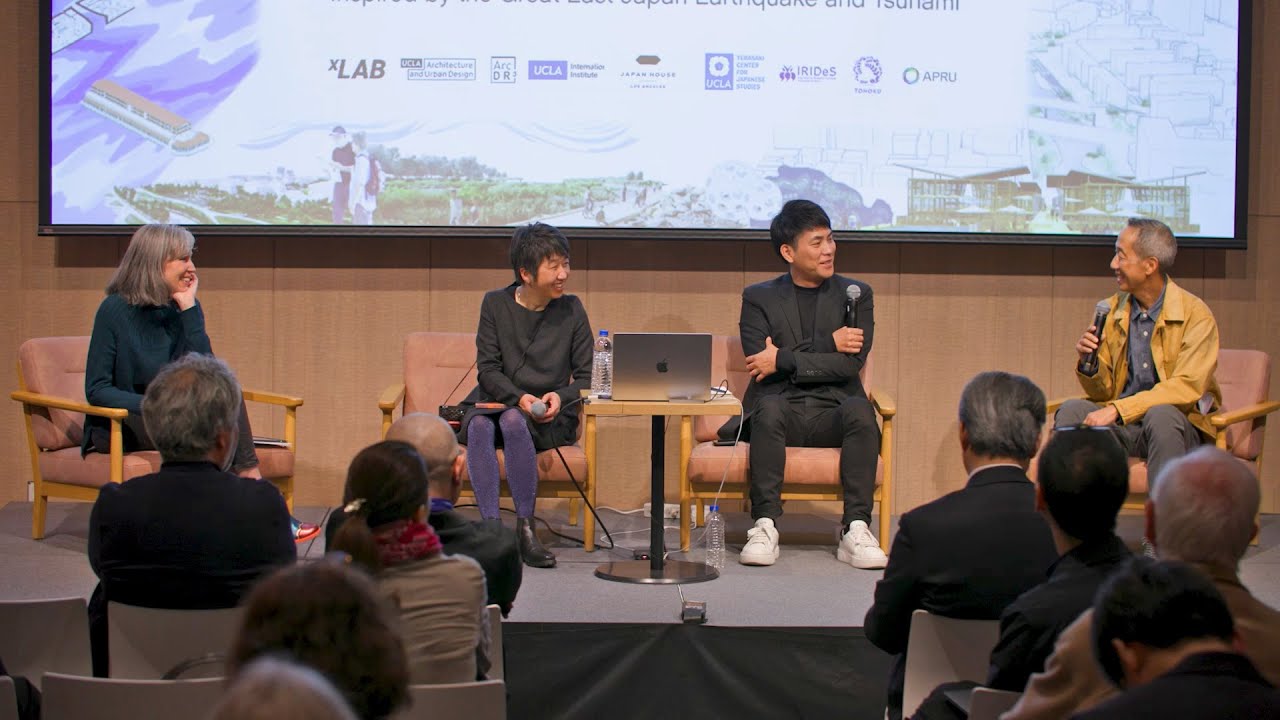
During the second session, the conversation moved the focus away from the past and introduced renowned architects to address important questions on how society can design living environments that proactively plan for inevitable environmental disasters.
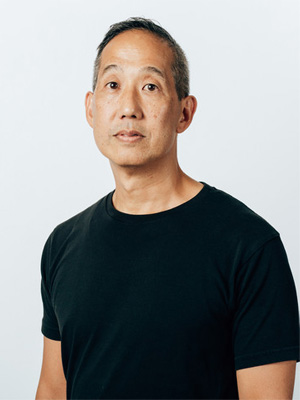
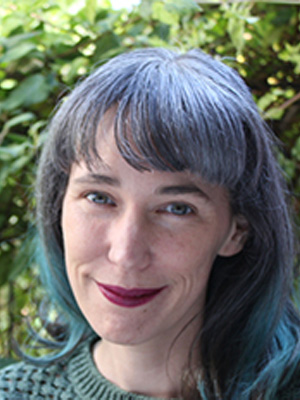
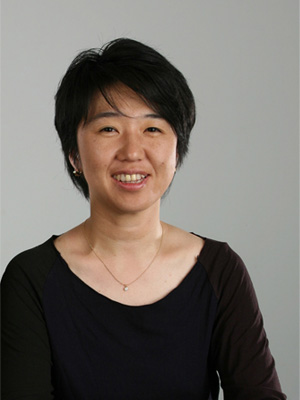
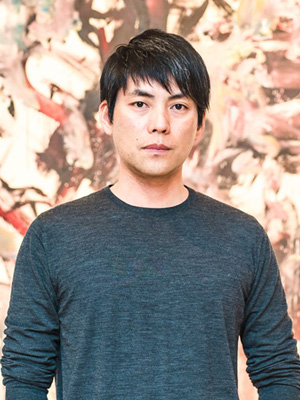
Photo by Julian Cassady
Speakers:
Emcee 1: Jeffrey Inaba | UCLA
Emcee 2: Michelle Liu Carriger | UCLA
Panelist 1: Momoyo Kaijima | Atelier Bow-Wow
Panelist 2: Shohei Shigematsu | OMA
Click here for speaker profiles (listed left to right)
Jeffrey Inaba, Adjunct Professor, UCLA
Jeffrey Inaba is the co-founder of Inaba Williams Architects. He’s interested in the knowledge that’s gained from the profession–especially ideas about urbanism, typology, and building technologies. His firm is based in Los Angeles and Brooklyn and its clients include Red Bull Music Academy, YouTube, Whitney Museum of American Art, BMW/MINI, New Museum, Van Alen Institute, and Public Art Norway. Before starting Inaba Williams he was a principal of AMO. Jeffrey enjoys writing and editing. He’s the author of Adaptation: Architecture, Technology and the City (2012), and World of Giving (Lars Müller Publishers, 2010). For ten years he served as the Features Editor of Volume magazine and he’s edited numerous publications about design, cities, and technology.
Michelle Liu Carriger, Associate Professor, UCLA
Michelle Liu Carriger specializes in the historiography of theater, performance and everyday life. Formerly a lecturer at Queen Mary University of London, her current research concentrates on clothing and performance of self in everyday 19th century life in Britain and Japan, as well as how clothing and fashion can themselves serve as historiographical methods for maintaining bodily links to the past. She attends especially to the ways in which notions of theatricality in clothing and fashion simultaneously articulate and mystify the discourses of gender, sexuality, race, ethnicity and modernity in their work upon bodies. Professor Carriger’s first article excerpted from this work, “The Unnatural History and Petticoat Mystery of Boulton and Park: A Victorian Sex Scandal and the Theatre Defense,” won the 2012 TDR (The Drama Review) Graduate Student Essay Contest Award and appears in the December 2013 issue of TDR. As a long-time practitioner of the Japanese Way of Tea (“tea ceremony”), including a yearlong Midorikai fellowship at the Urasenke Gakuen Professional College of Chado, Professor Carriger is at work on a second project on tea as a contemporary practice of historical embodiment and cultural performance. Performance work includes dramaturgy and directing at Brown University and the University of Colorado, Boulder, as well as devised performances and short films with collaborators Molly Flynn and Elise Morrison under the moniker Cabaret Murderess. Professor Carriger received her master of arts degree in Theatre Studies from the University of Colorado, Boulder, and completed her Ph.D. in Theatre Arts and Performance Studies from Brown University.
Momoyo Kaijima, Principal of Atelier Bow-Wow
Momoyo Kaijima is Principal of Atelier Bow-Wow based in Tokyo; Associate Professor at the Momoyo Kaijima Lab at the University of Tsukuba, Japan; and Associate Professor of Architectural Behaviorology in the Department of Architecture at the Swiss Federal Institute of Technology (ETH Zurich), Switzerland. She studied at the Japan Women’s University, and then obtained a Masters of Engineering from the Tokyo Institute of Technology (1994). She was also a guest student at the ETH Zurich and obtained post-graduate qualifications from the Tokyo Institute of Technology in 1999. She established Atelier Bow-Wow with Yoshiharu Tsukamoto in 1992. The firm creates domestic and cultural architecture and researches the urban conditions of micro and ad hoc architecture. Their studies investigate rural and traditional constructions in the context of their cultural and geographical environments. Atelier Bow-Wow has created over 40 residential houses, public buildings and numerous installations, in addition to a substantial body of urban design studies and theoretical essays including Behaviorology, Made in Tokyo, and Echo of Space/Space of Echo. Momoyo Kaijima has also taught at the Graduate School of Design (GSD) at Harvard University, USA (2003), was guest professor at the ETH Zurich, Switzerland (2005/07), architect in-residence at the University of Auckland, New Zealand (2010), and visiting professor at the Royal Danish Academy of Fine Arts, Architecture School (2011/12). She was a participant in “Salon Suisse 2014”: The next 100 Years – Scenarios for an Alpine City State at the Venice Biennale in Architecture. Curated by Zurich-based architects/urbanists Hiromi Hosoya and Markus Schaefer, “Salon Suisse” focussed on questions around urban development in Switzerland and the increasing pressure of urbanization worldwide. Momoyo Kaijima was a member of the Holcim Awards jury for region Asia Pacific in 2011 and 2014.
Shohei Shigematsu, Partner at OMA and Director of the New York office
Shohei Shigematsu is a Partner at OMA and Director of the New York office. Since joining the firm in 1998, he has been a driving force behind many of OMA’s projects in the Americas and Asia. Shohei provides design leadership and direction across the company for projects from their conceptual onset to completed construction. Sho’s designs for cultural venues include the Faena Arts District in Miami Beach, the Quebec National Beaux Arts Museum, and the Audrey Irmas Pavilion in Los Angeles as well as direct collaborations with artists, including Cai Guo Qiang, Marina Abramovic and Kanye West. Shohei also led the design of the world-traveling Prada exhibition, Waist Down, and is currently leading the exhibition design for the Costume Institute’s Spring 2016 exhibition at the Metropolitan Museum of Art, Manus x Machina: Fashion in the Age of Technology. Sho is also currently designing a number of luxury, high rise towers in towers in San Francisco, New York and Miami, as well as a mixed-use complex in Santa Monica. His engagement with urban conditions around the world include a new civic center in Bogota, Colombia ; a post-Hurricane Sandy, urban water strategy for New Jersey; and a food hub in Louisville, Kentucky featuring a diversity of program to reflect the full food chain, as well as a new foodscape of public spaces and plazas where producers and consumers meet. Prior to leading OMA’s effort in the Americas, Shohei also directed the firm’s winning competition entry for the Shenzhen Stock Exchange Headquarters in Shenzhen, China (completed 2013). Having led the team that won the design competition in 2002, he served as project architect for CCTV (China Central Television) Headquarters in Beijing until the end of design development. Shohei speaks regularly on the research and ideas that shape his work. His recent lectures include conferences hosted by TED, Wired Japan and universities throughout the world. He is a design critic at the Harvard Graduate School of Design, where he is conducting a research studio entitled Alimentary Design, investigating the intersection of food, architecture and urbanism.
Co-hosted by
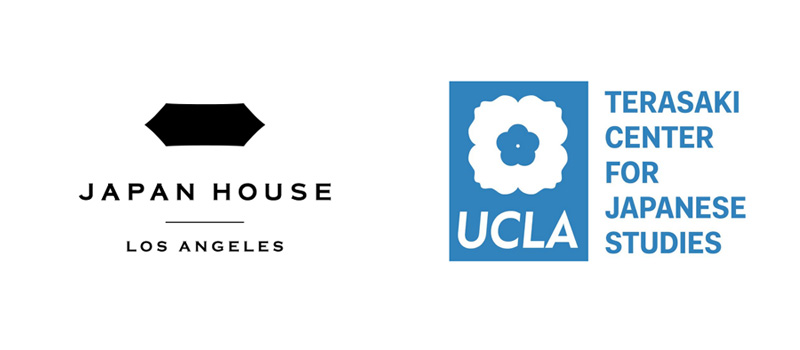
Media Sponsor
Related Exhibition
Designing with Disaster | Stories from Seven Regenerative Cities
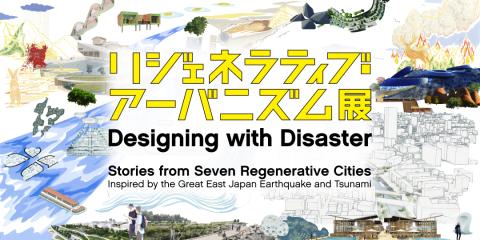
- Dates
01.27.2023 (Fri.) – 04.02.2023 (Sun.)
- Hours
Mon. – Fri. | 11:00 AM – 7:00 PM (PDT)
Sat. – Sun. | 11:00 AM – 8:00 PM (PDT)
- Location
JAPAN HOUSE Gallery, Level 2
- Fee
Free


